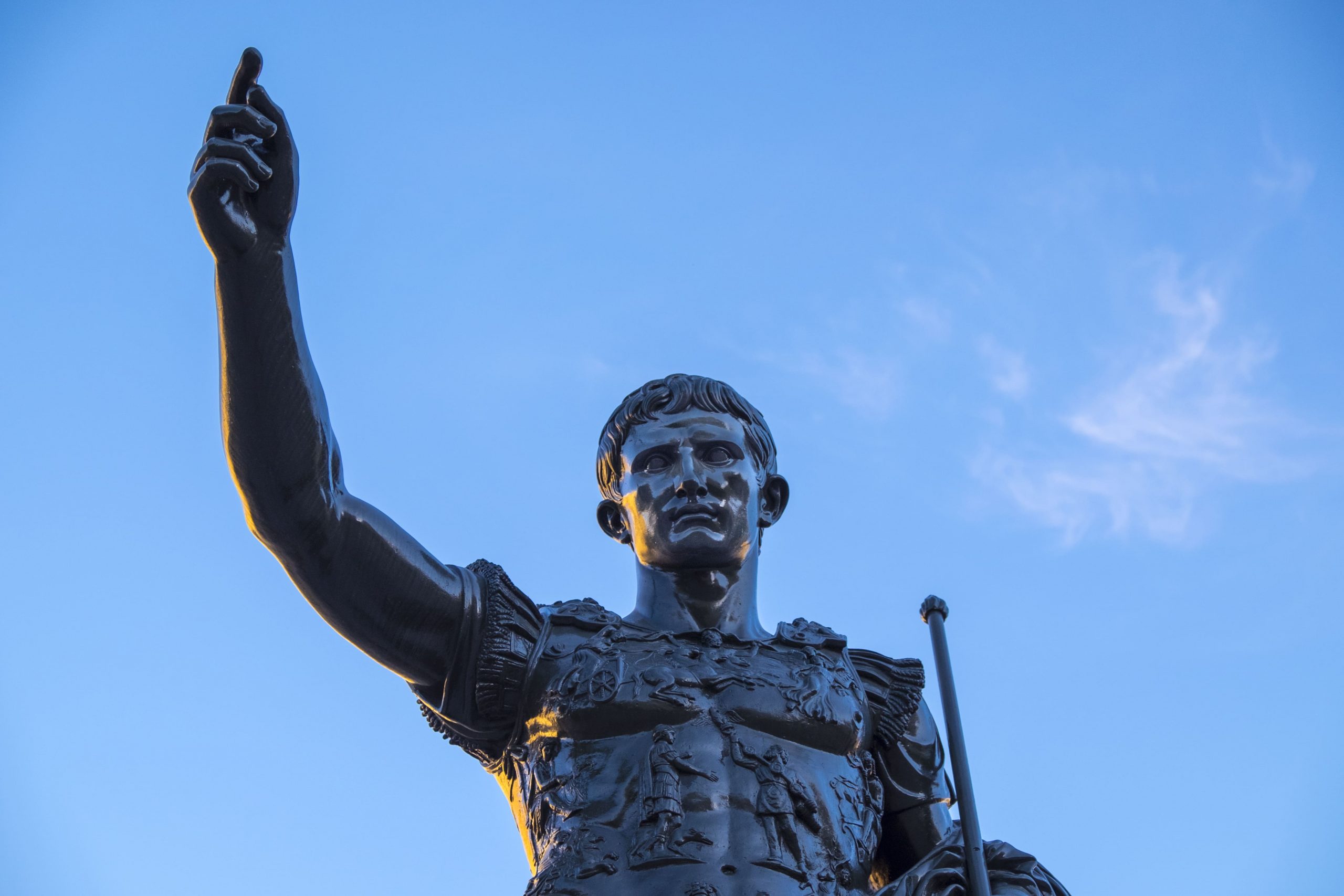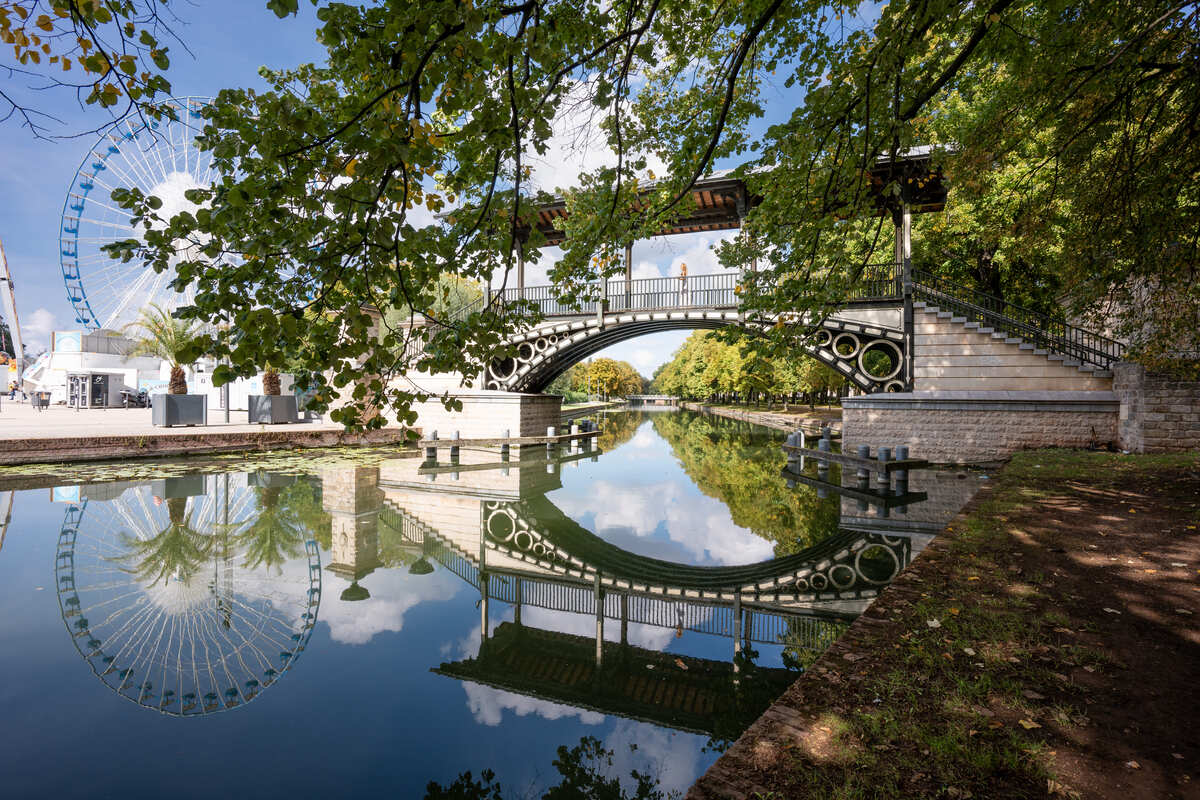Grab your best toga, slip on some sandals and prepare to hit the streets of Zaragoza as the star of your own epic. Ready to follow in the footsteps of the Romans on the banks of the Ebro?
More than 2,000 years ago, at the end of the first century B.C., Caesar Augustus travelled to the Iberian peninsular to wage the Cantabrian Wars. Following his victory, the Emperor decided to reorganise the provinces of Roman Hispania. Augustus founded several cities that were christened in his honour, including Caesaraugusta, as Zaragoza was known in Roman times. More than two millennia have passed since then, but the footprints of that imperial city, founded in 14 B.C., are still visible in Aragon’s capital.

Statue of Caesar Augustus and the ruins of the ancient Roman wall.
Caesaraugusta was protected by a robust wall measuring three kilometres long and boasting more than 100 towers. Most of this magnificent defence structure was destroyed or buried under the city’s modern streets, but there are still some fragments to be admired. The biggest is in Avenida de César Augusto, between the Zuda Tower and the Central Market. This chunk of wall, several metres long, is watched over by a statue of the Emperor, a bronze copy of the famous Augustus of Prima Porta that was gifted to the city by Mussolini in the 1940s.

Forum Museum

Archaeological remains at the Forum Museum

Underground tunnels from the Roman era, Forum Museum
Very close by, in La Seo Square, is the Forum Museum, hidden from tourists by an enormous cube of marble. The forum was the most important public space in Roman cities because it was the home of political, administrative, religious and commercial life. Caesaraugusta’s forum covered around 33,000 m2 and was positioned towards the River Port, which was of huge importance and now also has its own must-see museum.
The Forum revolved around a large open space surrounded by several porticos leading to the most important buildings: the basilica, dedicated to legal matters; the curia, used for politics; the main temple, the remains of which are buried under the La Seo Cathedral; and the taverns, home to businesses. Strangely, this layout remains almost exactly the same today.
A short stroll takes us to our next stop: Calle de San Juan y San Pedro. This was where the remains of the Roman Baths, dating from around the first century B.C., were discovered in 1982, and where today the fascinating Public Baths Museum can be visited. Unfortunately, only part of the pool is still standing, as well as the remains of the bases of columns and the five-metre porticos that surrounded it. Nevertheless, it’s still worth a visit to find out about some of the customs and luxuries enjoyed by Zaragoza’s inhabitants during that period.

View of Caesaraugusta’s Roman Theatre
Our stroll through Caesaraugusta now takes us to the magnificent Roman Theatre and its museum, located close by in Calle de San Jorge. While you explore the different parts of the Theatre, it’s not hard to imagine the shows that were put on there from the first century A.D. Different archaeological digs have unearthed beautiful fragments of columns, sculptures and cornices, among others, some of which can be seen here or at the Museum of Zaragoza, which has a good selection of artworks from the Roman era.
The last stop on our journey through Caesaraugusta is Santa Engracia Church, built in the fifteenth and sixteenth centuries on the site of the ancient Roman Christian necropolis. Its crypt houses two magnificent early Christian sarcophagi, dating from the fourth century and decorated with beautiful reliefs showing themes from the Old and New Testaments, a fabulous example of art from the end of the city’s Roman era.

Giant replica of a statue of Caesar Augustus in the Puerta Cinegia gastronomic market, Zaragoza.
More information: Roman Route (Zaragoza Tourism)



